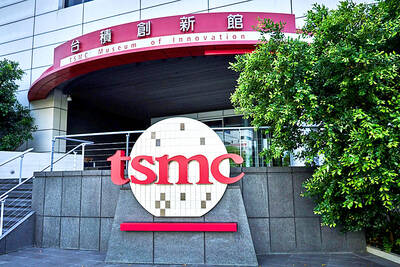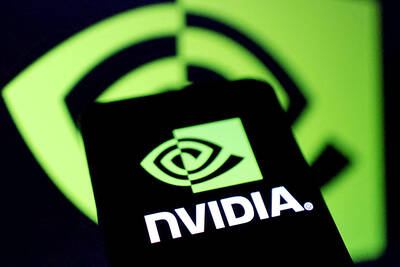The world’s largest rodent is having a big moment.
The capybara — a semi-aquatic South American relative of the guinea pig — is the latest in a long line of “it” animals to get star treatment during the holiday shopping season.
Shoppers can find capybara slippers, purses, robes and bath bombs. There are cuddly plush capybaras and stretchy or squishy ones. Tiny capybaras wander across bedding, T-shirts, phone cases, mugs, key chains and almost any other type of traditional gift item.

Photo: Palm Beach Zoo via AFP
Last year, it was the axolotl that took pride of place on many products, and the endangered amphibian remains popular. Owls, hedgehogs, foxes and sloths also had recent turns in the spotlight.
Trendy animals and animal-like creatures are not a new retail phenomenon; think the talking Teddy Ruxpin toys of the 1980s or Furby and Beanie Babies a decade later. However, industry experts say social media is amplifying which animals are hot — or not.
“It’s really the launch on TikTok, Instagram and other social media platforms that allow these characters or animals to blow up like crazy,” said Richard Derr, who has owned a Learning Express Toys franchise in Lake Zurich, Illinois, for nearly 30 years and is also a regional manager for the specialty toy store chain.
Social media is also speeding up the cycle.
Must-have animals might only last a season before something new captures customers’ imaginations.
“It’s really important to keep feeding that beast,” said Juli Lennett, a vice president and toy industry advisor at market research firm Circana. “If you are an influencer, you’re not going to talk about last year’s stuff.”
Skyrocketing plush toy sales — fueled by a need for comfort during the pandemic — are also increasing the demand for new and interesting varieties, Lennett said.
In the first nine months of this year, sales of plush animals were up 115 percent from the same period in 2019, she said. Overall toy sales rose 38 percent in that time.
Consumers are seeking out increasingly exotic species that they see in online videos, games and movies. Highland cows, red pandas and axolotls, a type of salamander native to Mexico, have all popped up in popular culture.
Searches for axolotls shot up in June 2021 after Minecraft added them to its game, Google Trends showed.
“Nobody knew what an axolotl was in 2020,” Derr said. “Now, everybody knows axolotls.”
Vermont Teddy Bear Company product designer Cassandra Clayton said rising sales to adults are also fueling the demand for unique — and collectible — plush toys.
“Stuffed animals are really becoming an ageless item,” she said. “Especially with the boom of self-care in adults and turning towards comfort objects to help de-stress and relax in your life.”
Clayton said she expects demand for unusual stuffed animals to continue to grow. Among the oddest she has seen: a stuffed version of a water bear, a type of microorganism also known as a moss piglet or a tardigrade.
“It doesn’t necessarily inspire you to cuddle with them, but you’re really seeing the industry start turning towards those characters,” she said. “I think that’s the next trend.”
Figuring out the next “it” animal — or microorganism — is a challenge for toymakers.
“You never know exactly when they’re going to hit and how big they’re going to be,” said Sharon Price John, the president and CEO of Build-A-Bear Workshop, a chain of nearly 500 stores that offers an expanding menagerie of animals and characters for customers to customize, including capybaras and axolotls.
The St Louis-based company watches social media and gets ideas from talking to store employees and patrons, John said.
It usually takes Build-A-Bear up to a year to introduce a new stuffed toy, but the company can move faster if it spots a trend, she said, adding that it sometimes tests a small batch online to make sure a trend is sticking.
Annual trade shows in Asia, Germany and elsewhere are another place to spot new trends.
Punirunes — digital, interactive pets that also come in plush varieties — are big in Japan right now and would likely take off in the US, toy store owner Derr said.
“Here, I can’t give them away. They’re too new. But give it a year or two,” he said.
Companies can kick off their own trends too. Build-A-Bear’s Spring Green Frog, introduced in 2020, was an immediate hit thanks to videos posted by customers.
It remains popular, with nearly 2 million sold, John said.
John said she suspects people are drawn to friendly, slow-moving capybaras, because watching videos of them are so relaxing. However, shoppers who want one need to act fast. A Build-A-Bear holiday capybara with red and green sprinkles on its fur — dubbed a “cookiebara” — has already sold out, she said.

SEEKING CLARITY: Washington should not adopt measures that create uncertainties for ‘existing semiconductor investments,’ TSMC said referring to its US$165 billion in the US Taiwan Semiconductor Manufacturing Co (TSMC, 台積電) told the US that any future tariffs on Taiwanese semiconductors could reduce demand for chips and derail its pledge to increase its investment in Arizona. “New import restrictions could jeopardize current US leadership in the competitive technology industry and create uncertainties for many committed semiconductor capital projects in the US, including TSMC Arizona’s significant investment plan in Phoenix,” the chipmaker wrote in a letter to the US Department of Commerce. TSMC issued the warning in response to a solicitation for comments by the department on a possible tariff on semiconductor imports by US President Donald Trump’s

The government has launched a three-pronged strategy to attract local and international talent, aiming to position Taiwan as a new global hub following Nvidia Corp’s announcement that it has chosen Taipei as the site of its Taiwan headquarters. Nvidia cofounder and CEO Jensen Huang (黃仁勳) on Monday last week announced during his keynote speech at the Computex trade show in Taipei that the Nvidia Constellation, the company’s planned Taiwan headquarters, would be located in the Beitou-Shilin Technology Park (北投士林科技園區) in Taipei. Huang’s decision to establish a base in Taiwan is “primarily due to Taiwan’s talent pool and its strength in the semiconductor

An earnings report from semiconductor giant and artificial intelligence (AI) bellwether Nvidia Corp takes center stage for Wall Street this week, as stocks hit a speed bump of worries over US federal deficits driving up Treasury yields. US equities pulled back last week after a torrid rally, as investors turned their attention to tax and spending legislation poised to swell the US government’s US$36 trillion in debt. Long-dated US Treasury yields rose amid the fiscal worries, with the 30-year yield topping 5 percent and hitting its highest level since late 2023. Stocks were dealt another blow on Friday when US President Donald

UNCERTAINTY: Investors remain worried that trade negotiations with Washington could go poorly, given Trump’s inconsistency on tariffs in his second term, experts said The consumer confidence index this month fell for a ninth consecutive month to its lowest level in 13 months, as global trade uncertainties and tariff risks cloud Taiwan’s economic outlook, a survey released yesterday by National Central University found. The biggest decline came from the timing for stock investments, which plunged 11.82 points to 26.82, underscoring bleak investor confidence, it said. “Although the TAIEX reclaimed the 21,000-point mark after the US and China agreed to bury the hatchet for 90 days, investors remain worried that the situation would turn sour later,” said Dachrahn Wu (吳大任), director of the university’s Research Center for